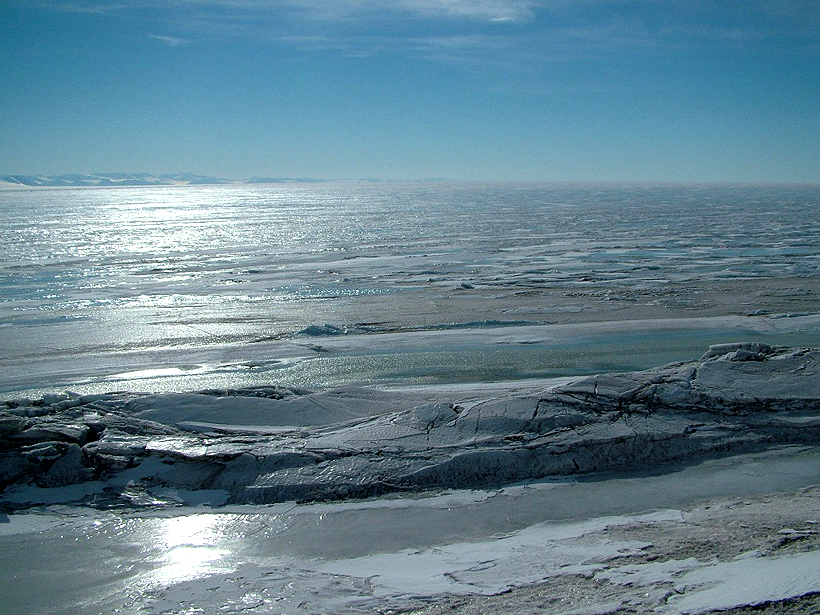In Antarctica, disk-shaped crystals known as frazil ice can seed growth under an ice cover. The crystals are part of ice shelf water (ISW) plumes, supercooled water beneath the sheets of ice.
Over large areas, ice shelf and sea ice growth depends on the plume, and the existence of the plume depends directly on the size and concentration of the frazil ice crystals within it. In a recent paper, Hughes et al. examined the growth of sea ice in McMurdo Sound, Antarctica, to improve and expand on a previous model of ISW plumes and the physics behind their contribution to ice shelf and sea ice growth.
The authors modified an existing one-dimensional plume model to focus on the sea ice–ocean interface. The model takes the frazil ice concentration of the plume into consideration, as well as the temperature and salinity of the plume. Oceanographic stations in the McMurdo Sound provided data input for the model. Eighteen trials of the model determined which variables affected the ice plume–sea ice interaction the most.
The material traveling through the plume reveals the rate of growth that the plume contributes to the sea ice. The authors concluded that the ISW plume contributes a tenth of a meter of growth to McMurdo Sound sea ice each year—accounting for about 5% of the total average thickness, they say. (Journal of Geophysical Research: Oceans, doi:10.1002/2013JC009411, 2014)
—Shannon Palus, Freelance Writer
Citation: Palus, S. (2015), How do tiny ice crystals help sea ice stay thick?, Eos, 96, doi:10.1029/2015EO025743. Published on 9 March 2015.
Text © 2015. The authors. CC BY-NC 3.0
Except where otherwise noted, images are subject to copyright. Any reuse without express permission from the copyright owner is prohibited.

